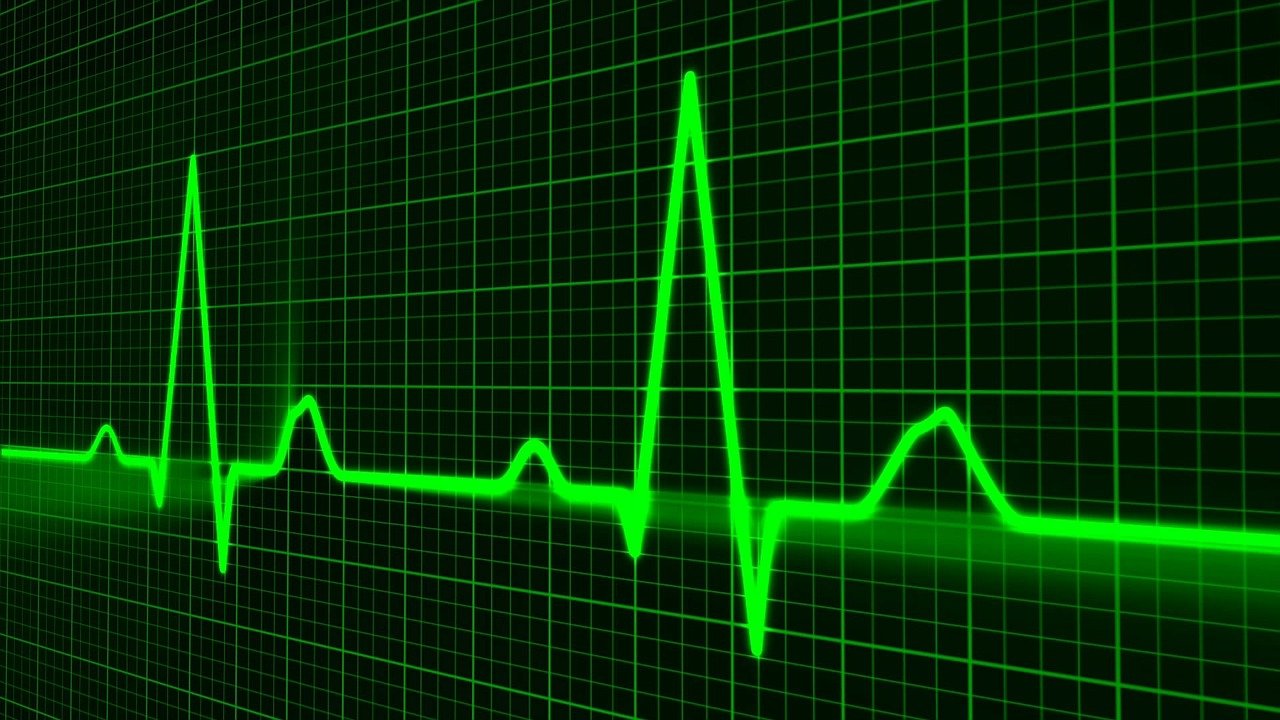
In the early 2010s, British researchers sought to explore the links between diabetes and heart disease. Their finding was clear: among the 690,000 people included in their study, diabetic patients were twice as likely to develop cardiovascular disease as other individuals. And this result was confirmed by other scientific work, such as a 2018 analysis which indicates that 32.2% of diabetes patients are likely to suffer from angina, atherosclerosis or myocardial infarction. But what are the symptoms of these conditions? How can they be detected and what treatments are recommended? Let’s look at some of the most common heart diseases in people with diabetes.
Angina pectoris
The disease
When the coronary arteries become narrowed, the heart does not receive enough nutrients and oxygen. This causes pain in the chest cavity Commonly shortened to “angina”, “angina pectoris” can have various origins and hide another cardiovascular disease. It is a very common symptom, affecting 1 in 12 men between the ages of 55 and 64, and 1 in 7 men over the age of 65. It is also present in women, with a lesser frequency.
Its symptoms
Angina pectoris is characterized by a sensation of compression of the rib cage. It may be accompanied by pain behind the breastbone, fatigue, heart palpitations, nausea, dizziness, or shortness of breath. Such symptoms occur most often during exercise and can cause great anxiety in the patient. In some cases, the pain extends to the stomach, the back, the arms or even the neck.
Its complications
The expression “angina pectoris” designates a physical symptom whose causes vary from one patient to another. It is therefore necessary to look for the reason of the angina to avoid the development of a pathology such as:
- acute coronary insufficiency,
- atherosclerosis,
- heart failure,
- or even myocardial infarction.
Its diagnosis
When a patient complains of chest pain, various tests allow the cardiologist to identify the cause. These notably include:
- the electrocardiogram, which involves studying the heartbeat to detect irregular electrical activity,
- an angiography, during which blood vessels are observed through the injection of a contrast agent
- a chest x-ray,
- or a blood test.
Diabetes is a risk factor for angina. In fact, according to a study conducted between 1996 and 2002 on more than 8,600 patients, diabetics are twice as likely to be affected by this condition.
Its treatments
There are symptomatic treatments for angina pectoris (i.e., to suppress the pain), such as trinitrin-based drugs. This active ingredient relaxes the vascular fibers and increases the oxygen supply to the heart. It provides relief in less than five minutes.
Heart Failure
The disease
The heart is a powerful organ, pumping and propelling blood through regular contractions. These contractions are carried out by the heart muscle and two sealed chambers: the right and left ventricles. When one of these chambers loses efficiency, heart failure develops: the blood ejection flow is slowed down and the heart’s contraction frequency becomes insufficient. The body’s supply of oxygen and nutrients is threatened. To overcome this problem, the heart speeds up its beating and its walls thicken, which aggravates the disease.
Its symptoms
Heart failure is often the first cardiovascular disease affecting diabetics or pre-diabetics. It is most often manifested by shortness of breath or by a generalized feeling of fatigue. It can also manifest itself by swelling in the legs or by coughing fits.
Its complications
Heart failure can cause plasma to leak into the digestive organs, lungs and legs. This phenomenon leads to the formation of edemas.
Its diagnosis
Echocardiography is used to detect heart failure. This ultrasound medical imaging technique is optimal for observing the ventricles and walls of the heart.
Its treatments
To know which treatment to prescribe to their patient, the doctor must determine which diseases are associated with their heart failure. Indeed, heart failure is sometimes a symptom of an infection, high blood pressure, pulmonary embolism, chronic bronchitis, cardiomyopathy, angina pectoris or even a myocardial infarction.
Atherosclerosis
The disease
Lipids contained in certain foods sometimes accumulate in the aorta and other medium and large arteries. Over time, these deposits become loaded with blood cells (platelets) and calcium. They harden, grow and form small, light-colored masses: atherosclerotic plaques. The term “atherosclerosis” refers to the presence of these aggregates in the body. It is a pathology closely associated with high blood sugar, vascular endothelial dysfunction and therefore with type 1 and type 2 diabetes. By keeping their blood sugar under control, a diabetic individual significantly reduces their risk of developing atherosclerosis.
Its symptoms
Atherosclerosis has no symptoms if the atherosclerotic plaque remains small and fixed. It is when the plaque becomes detached and blocks a blood vessel that the patient may feel pain, cramps or shortness of breath.
Its complications
The most serious consequence of atherosclerosis is the formation of a clot that causes the obstruction of a vessel such as:
- the coronary artery (irrigating the heart), which can lead to a myocardial infarction,
- the carotid artery (connected to the brain), with an important risk of stroke,
- or the renal arteries.
Its diagnosis
Several examinations allow the detection of atherosclerosis and the measurement of the thickness of fatty deposits, such as X-ray arteriography, electrocardiogram, and Doppler ultrasound.
Its treatments
When faced with atherosclerosis, the cardiologist assesses the risk of complications and recommends:
- a low-fat diet,
- the use of a platelet aggregation inhibitor (i.e., an antiplatelet drug),
- angioplasty,
- and in some cases, coronary artery bypass surgery.
Myocardial infarction
The disease
Sometimes a clot forms in the body (for example in the legs) and then interferes with the proper functioning of a vital organ. The clotted blood, obstructing the arteries or veins, prevents the circulation of nutrients and oxygen to:
- the brain (in case of a stroke),
- the lungs (in the case of a pulmonary embolism)
- or the heart (this is called a myocardial infarction or “heart attack”).
In the latter case, the formation of a blood clot often follows the formation of a fatty plaque in the coronary artery. The obstruction of the coronary artery causes the death of the cardiac muscle cells (also called myocardium).
Its symptoms
The heart attack manifests itself by a great variety of symptoms such as:
- pain in the chest,
- throbbing from the chest to the left arm (or both arms), jaw, stomach, back and neck
- shortness of breath,
- sudden excessive sweating,
- nausea and vomiting,
- coughing,
- wheezing while breathing,
- a feeling of dizziness
Its complications
If not treated promptly by a medical team, a heart attack leads to cardiac arrest and death. When the disease is treated in time, it can be without consequence for some patients. For others, it can lead to:
- an abnormal heart rhythm (the heart beats too fast or too slow),
- palpitations,
- heart failure,
- even cardiogenic shock (i.e., a dangerous drop in blood flow to the ventricular pump).
Its diagnosis
Compared to people without diabetes, people with type 2 diabetes are twice as likely to have a heart attack. For people with type 1 diabetes, this risk is multiplied by 3.8. This is according to a recent report on diabetes-related hospital admissions in England and Wales. Therefore, people with this disease should be monitored closely. If a heart attack is suspected, an electrocardiogram is performed as an emergency measure to make a definitive diagnosis.
Its treatments
There are several ways to stop an episode of myocardial infarction, ranging from the prescription of anticoagulants to coronary bypass surgery. The choice of treatment depends on the degree of obstruction of the arteries.
Sources:
- https://www.thelancet.com/journals/lancet/article/PIIS0140-6736(10)60484-9/fulltext
- https://www.diabetes.co.uk/diabetes-complications/angina-and-diabetes.html#:~:text=Angina%20is%20a%20condition%20in,presents%20an%20additional%20risk%20factor
- https://www.diabetes.co.uk/diabetes-complications/angina-and-diabetes.html
- https://academic.oup.com/ehjqcco/article/1/1/37/1860137
- https://medicalguidelines.msf.org/viewport/EssDr/english/glyceryl-trinitrate-nitroglycerin-trinitrin-oral-16683820.html
- https://cardiab.biomedcentral.com/articles/10.1186/s12933-021-01408-1#ref-CR4
- https://journals.sagepub.com/doi/full/10.1177/2047487319878373
- https://www.ncbi.nlm.nih.gov/pmc/articles/PMC7084712/#__ffn_sectitle
- https://www.nhs.uk/conditions/heart-attack/symptoms/
- https://www.nhs.uk/conditions/heart-attack/complications/
- https://www.diabetes.org.uk/resources-s3/public/2020-06/NDA_%20Summary_2020%20FINAL%20Comp%20Mortality.pdf
Our latest publications
Want to learn more about topics related to blood sugar management?
Here are our most recent blog posts!



Great blog! Also, very informative. This is not one of my favorite topics but you kept me engaged. Your website kind of reminds me of diabetes symptoms blog from another site. You can check it out.